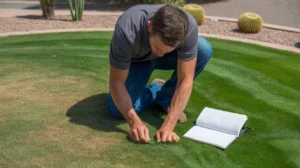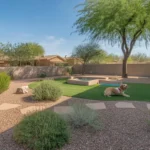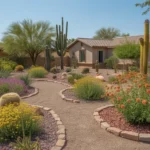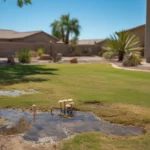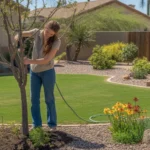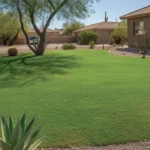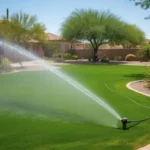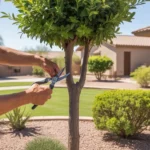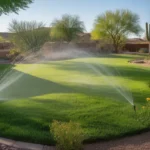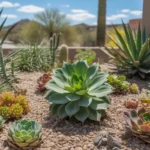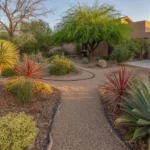As proud Gilbert homeowners, we all strive for a lush, green lawn that’s the envy of the neighborhood. But sometimes, despite our best efforts, problems can pop up that leave our grass looking less than stellar. If you’re facing patchy spots, discoloration, or other concerning lawn symptoms, don’t despair! Our handy troubleshooting checklist will help you diagnose and address common issues to get your Gilbert yard back on track.
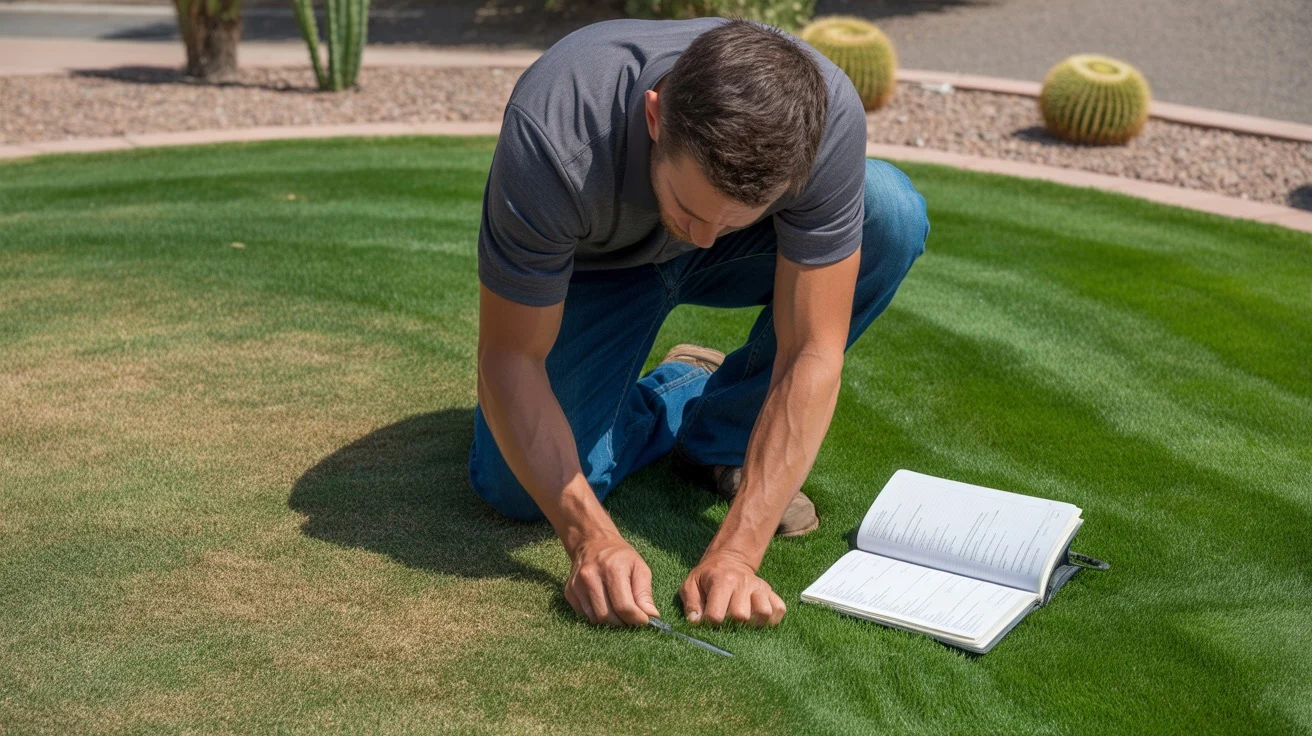
Step 1: Identify Visible Symptoms
The first step in tackling any lawn problem is to take a close look and note the specific symptoms you’re seeing. Some common red flags include:
- Brown or yellow patches
- Thinning or bare spots
- Wilting or drooping grass blades
- Spongy or soggy soil
- Visible insects or grubs
- Unusual growths or fungus
Walk your entire lawn and make a list of everything that looks off. The more specific you can be about the symptoms, the easier it will be to narrow down the underlying cause. Take photos of problem areas to document their appearance and track changes over time.
As Deshawn Hill, owner of Emerald Lawns in Gilbert, advises: “Really get in there and examine your grass up close. Look at the soil, the roots, the blades. The clues to what’s ailing your lawn are often hiding in plain sight if you know what to look for.”
Step 2: Check Your Watering Habits
Improper watering is one of the most common culprits behind lawn problems, especially in Gilbert’s arid climate. Too little water can cause drought stress, while overwatering can lead to fungal growth and shallow roots. To troubleshoot irrigation issues:
- Verify that sprinklers are delivering water evenly across the lawn
- Check for broken sprinkler heads, leaks, or clogged nozzles
- Ensure you’re providing 1-1.5 inches of water per week, adjusted for rainfall
- Water deeply and infrequently to encourage strong, deep roots
- Always water in the early morning to minimize evaporation
If you suspect your watering schedule is off, try adjusting it gradually and see if the lawn’s appearance improves. Installing a smart controller that automatically adapts to weather conditions can take the guesswork out of irrigation.
“Most of the sick lawns I see are either parched or drowning,” notes Hill. “Getting your watering dialed in is key to preventing a host of other issues down the line. When in doubt, always get your soil tested for moisture content.”
Step 3: Evaluate Soil Health
If watering doesn’t seem to be the problem, the next step is to assess what’s happening beneath the surface in your soil. Healthy soil is crucial for grass to thrive, providing essential nutrients, oxygen, and root support. Some soil problems to check for include:
- Compaction: Overly dense soil that impedes root growth and drainage
- pH imbalance: Soil that is too acidic or alkaline for optimal grass growth
- Nutrient deficiencies: Lack of key minerals like nitrogen, phosphorus, or potassium
- Thatch buildup: Excess dead grass stems that block water and air circulation
The best way to diagnose soil issues is with a professional soil test, which will pinpoint your soil’s exact pH and nutrient profile. You can also try a simple DIY test for compaction: stick a screwdriver into the soil and note the resistance. If it’s tough to push in, your soil is likely compacted and could benefit from aeration.
“Never underestimate the importance of what’s happening underground,” advises Hill. “I’ve seen lawns that were given up for dead completely turn around with the right soil amendments. It’s all about creating an optimal environment for those grass roots to flourish.”
Step 4: Look for Signs of Pests or Disease
If you’ve ruled out watering and soil problems, the culprit could be an infestation of insects or lawn disease. Some common offenders in Gilbert include:
- Grubs: Plump, white larvae that feed on grass roots
- Chinch bugs: Small black insects that suck moisture from grass blades
- Brown patch: Circular patches of dead grass caused by fungal infection
- Rust: Reddish-orange pustules on grass stems, often in late summer
Carefully part the grass in affected areas and look for visible pests or unusual fungal growth. Grubs, in particular, can be spotted by peeling up a section of sod and inspecting the soil. If you notice a lot of insect activity or patches of diseased grass, it’s time to treat.
“Pest and disease issues can sneak up on you, so vigilance is key,” says Hill. “Regularly inspecting your lawn for early warning signs allows you to nip problems in the bud before they spread. And if you do need to treat, always opt for the most targeted, least toxic approach first.”
Step 5: Consider Other Environmental Factors
Finally, take a step back and consider if any other environmental factors could be stressing your lawn. Some often-overlooked issues include:
- Too much shade: Grass needs ample sun to thrive, so prune trees and shrubs as needed
- Mower damage: Dull blades or scalping can injure grass, so keep your mower well-maintained
- Heavy foot traffic: Constant trampling compacts soil, so redirect play to non-lawn areas
- Competition from tree roots: Mature trees can hog water and nutrients, so consider root pruning
Sometimes the solution is as simple as changing a single habit, like mowing a little higher or keeping dogs off the grass. Other times you may need to make tougher decisions, like removing a shady tree or replacing a high-traffic lawn area with hardscaping.
“It’s all about being realistic with what your lawn can handle,” advises Hill. “By making small environmental tweaks, you can relieve pressure on the grass and set your lawn up for long-term health. With the right growing conditions and a little TLC, even the most problematic yard can rebound beautifully.”
Armed with this step-by-step troubleshooting checklist, you’re well on your way to diagnosing and treating whatever is ailing your Gilbert lawn. By systematically ruling out potential issues, from watering woes to sneaky soil problems to pesky pests, you can zero in on the root cause and take targeted action. With a little patience and persistence, you’ll soon be rewarded with the thick, vibrant, envy-inducing grass you’ve always wanted. Happy troubleshooting!

